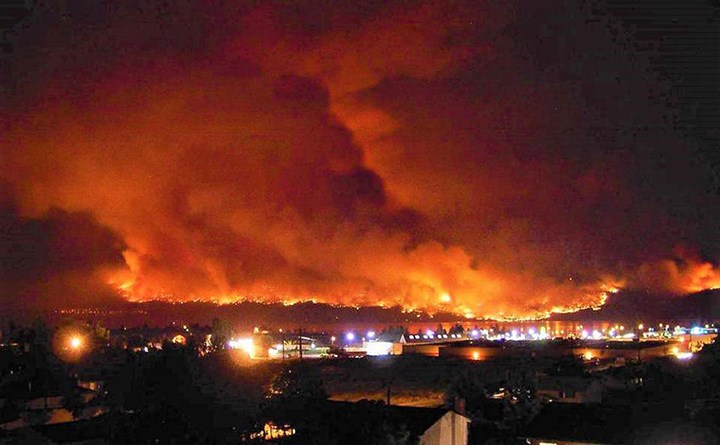Getting groceries for an elderly neighbour or checking in on a friend with a disability were always good deeds — until the pandemic made them often life-saving interventions.
Being a good neighbour could also reduce the damaging health effects of climate change, according to new research resulting from a partnership between the University of British Columbia and two Lower Mainland health authorities.
When it comes to individual health impacts from climate change, how connected and adaptable your community is counts more than how close you live to a flood plain or wildfire hot spot, the project found.
And that community resilience can start with something as simple as chatting with a senior neighbour on their porch.
The research resulted in maps that show how the effects of climate hazards vary depending on the age, demographics and resilience of communities across the Vancouver Coastal and Fraser Valley health regions.
The hope is that cities can start investing in projects that boost a community’s ability to adapt to changing climate.
“Thinking about climate change and health at a global scale, like during the pandemic, we lose track of the fact that local disparities can be very high,” said Dr. Michael Schwandt, chief medical officer at Vancouver Coastal Health and a project co-lead.
“It’s a challenge sometimes to communicate the impacts of climate change on health when the world is so busy.”
The first layers of the map shows hazards associated with the four major effects of climate change that researchers measures: higher temperatures, flooding, wildfire smoke and ground-level ozone.
The second layer, which shows the demographics of each community, shows how community health affects its ability to weather the impact of climate change.
It matters, for example, if a population is largely racialized, because structural racism in health care, housing and employment increases the likelihood people may have underlying medical conditions that would be complicated by higher temperatures or wildfire smoke.
Lead researcher Michael Brauer says the pandemic has exacerbated racial and income-based disparities in health and finances. That only strengthens the case for an intersectional, holistic response to the climate’s impacts on health, one that considers social and economic factors.
“Those of us working in public health have known for a long time there are many people who get left behind, and many people who, for all kinds of reasons, suffer more,” said Brauer, a professor at the UBC School of Population and Public Health. “The pandemic has been a bit of an eye-opener, to see that there are segments of the population that we all rely on and who bear the brunt of risks.
“We’re only as healthy as our worst off.”
But the map’s third layer is what makes the project a hopeful one, he said.
Resilience and adaptability in communities can be built through policy and street by street. In New York, Brauer recalls, air conditioner distribution programs to save lives in heat waves have succeeded by getting the word out to seniors through friendly neighbours who check on them regularly.
“Even though you may be young and mobile and able to manage, your neighbour may not be,” said Brauer. He wants to see informal community help programs organized, especially now that the pandemic has kicked so many into high-gear.
But individuals can’t do it alone. Brauer and Schwandt want the map to start conversations about what all levels of government can do to build healthy communities.
This could mean writing climate resilience plans, building infrastructure like parks that help regulate temperature and investing money and resources into health services in racialized, elderly and low-income communities.
Schwandt says the map doesn’t address all the impacts of climate change, such as on mental health and food security, but lays the groundwork for people to start conversations in their communities and with elected officials.
“With the map, we know what the best-case scenario can be and how to implement it in all our communities,” said Schwandt.



